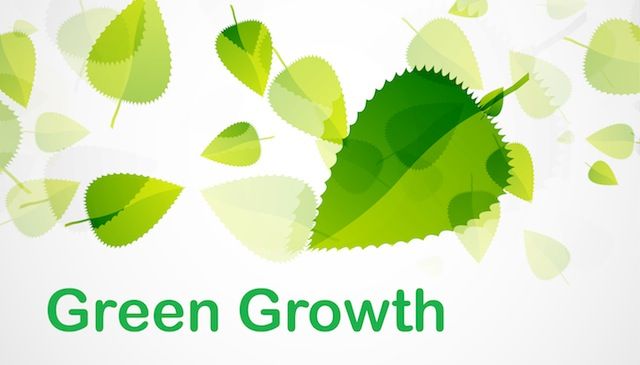Green Economy: The WEF Nexus and Green Growth
Published on by Robert Brears, Founder of Our Future Water, Young Water Leaders, Mitidaption & Author (Springer Nature, Wiley) in Government
In a green economy – an economy that values and enhances natural capital while simultaneously promoting economic growth and human well-being – the management of the water-energy-food nexus means fostering positive interdependencies and synergies while reducing trade-offs across and between the Nexus sectors to achieve green growth.
By Robert C. Brears
 However, achieving green growth while reducing Nexus pressures is challenged by a variety of mega-trends including rapid population and economic growth, urbanization and climate change impacting in some shape or form the availability of water, energy, and food.
However, achieving green growth while reducing Nexus pressures is challenged by a variety of mega-trends including rapid population and economic growth, urbanization and climate change impacting in some shape or form the availability of water, energy, and food.
Nonetheless, there are various cities, states and nations around the world that are leading in the development of innovative policies that create positive interdependencies and synergies across and between the Nexus sectors while reducing trade-offs in the development of a green economy.
Case 1: Abu Dhabi’s more crop per drop initiative
In the Middle East, demand for food is expected to increase by 50 percent over the next two decades due to the region’s population growing by 40 percent between 2010 and 2030. With water use in agriculture already accounting for 85 percent of total water use in the region, and climate change likely to reduce agricultural yields by 27-55 percent by the end of this century, the Middle East will likely experience acute food-water nexus pressures. To ensure more crop per drop, and enhance food security, Abu Dhabi has launched its Agricultural Investment Fund Project to support the development of hydroponics in the Emirate with two options available to farmers:
- Option 1 (Farms with existing greenhouses)
The Fund will provide an interest-free loan of 50 percent of the costs of installing a hydroponic system in an existing greenhouse with payback set at five years. - Option 2 (Farms without greenhouses)
The Fund will provide an interest-free loan of 50 percent of the costs of investing in new greenhouses with the installation of a hydroponic system.
Case 2: Uzbekistan’s energy efficiency labeling scheme
In Central Asia, despite the region having abundant supplies of water and energy the resources are highly unbalanced across the region and access to them is uneven. Hydropower resources are concentrated in the Kyrgyz Republic and Tajikistan while thermal resources are concentrated in Uzbekistan, Turkmenistan, and Kazakhstan. To reduce energy-water nexus pressures, Uzbekistan is aiming to reduce energy use per unit of GDP in half by 2030. To achieve this, the country in 2015 initiated the development of an energy labeling scheme that forbids from 1 January 2016 the importation of electric appliances that do not contain information on energy efficiency class, which ranges from most efficient ‘A’ to least efficient ‘G’. Additional energy efficiency classes of A+ and A++ will be used for appliances that have even higher efficiency than appliances marked as ‘A’. It is planned that Uzbekistan will establish a step-by-step ban on importing/manufacturing household electric devices with ‘G’ class energy efficiency from 1 January 2018, ‘F’ from 1 January 2019 and ‘E’ from 1 January 2020.
Case 3: Maryland’s animal waste to energy program
In the United States, the agricultural sector uses nearly 800 trillion British thermal units of energy in 2012, the equivalent of Utah’s entire energy consumption. To help reduce energy consumption in the sector, as well as promote affordable, reliable clean energy and achieve energy independence, the Maryland Energy Administration has announced the FY2017 Animal Waste to Energy Grant Program for agricultural grantees, including businesses, government agencies, and non-profits in Maryland to install animal waste to energy projects while reducing the environmental impacts that animal wastes can have on the state’s natural resources including water quality. With up to $2 million available, applicants will receive a grant that covers 50 percent of the project’s expenses. The grant is competitive with each project evaluated on criteria including:
- The capacity and efficiency of producing electricity
- Economic impact of the project on the host site and local and regional economies
- Whether any contracts have been secured for electricity generated from the project.
Conclusions
Overall, no region of the world is spared from rising water-energy-food nexus pressures. Nonetheless, governments at a variety of levels are implementing a range of innovative policies to encourage positive interdependencies and synergies across and between the Nexus sectors while reducing trade-offs in the development of a green economy, including interest-free loans and grants to reduce food-water- and food-energy-related nexus pressures as well as the use of energy efficiency labelling to reduce energy-water-related nexus pressures in a transboundary river basin-setting.
About the author
Robert C. Brears is the author of The Green Economy and the Water-Energy-Food Nexus published with Palgrave Macmillan. The book provides readers with a series of in-depth case studies of leading cities, states, nations and regions of differing climates, lifestyles and income-levels from around the world that have implemented a variety of policy innovations to reduce water-energy-food nexus pressures and achieve green growth.
Attached link
https://www.water-energy-food.org/news/2017-09-14-green-economy-the-wef-nexus-and-green-growth/Media
Taxonomy
- Water-Energy Nexus
- Water-Energy-Food Security
- green economy
- green growth